Filter by
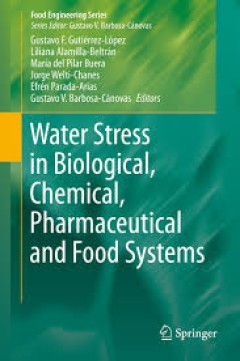
Water Stress in Biological, Chemical, Pharmaceutical and Food Systems
Water Stress Management contains the invited lectures and selected oral and poster presentations of the 11th International Symposium on the Properties of Water (ISOPOW), which was held in Queretaro, Mexico 5-9 September 2010. The text provides a holistic description and discussion of state-of-the-art topics on the role of water in Biological, Chemical, Pharmaceutical and Food systems within a f…
- Edition
- -
- ISBN/ISSN
- 978-1-4939-2578-0
- Collation
- -
- Series Title
- -
- Call Number
- -
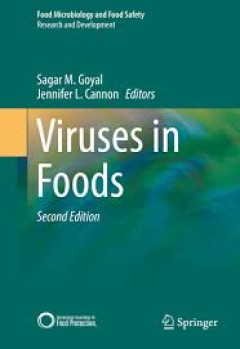
Viruses in Foods
Foodborne viruses are an important group of pathogens recognized to cause significant disease globally, in terms of both number of illnesses and severity of disease. Contamination of foods by enteric viruses, such as human norovirus and hepatitis A and E viruses, is a major concern to public health and food safety. Food Virology is a burgeoning field of emphasis for scientific research. Many de…
- Edition
- -
- ISBN/ISSN
- 978-3-319-30723-7
- Collation
- -
- Series Title
- -
- Call Number
- -

"Food Engineering Laboratory Manual "
FROM THE PREFACE The purpose of this laboratory manual is to facilitate the understanding of the most relevant unit operations in food engineering. The first chapter presents information on how to approach laboratory experiments; topics covered include safety, preparing for a laboratory exercise, effectively performing an experiment, properly documenting data, and preparation of laboratory rep…
- Edition
- -
- ISBN/ISSN
- -
- Collation
- -
- Series Title
- -
- Call Number
- -
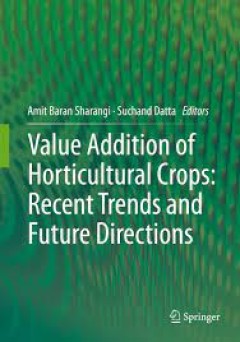
Value Addition of Horticultural Crops: Recent Trends and Future Directions
This book combines several ideas and philosophies and provides a detailed discussion on the value addition of fruits, vegetables, spices, plantation crops, floricultural crops and in forestry. Separate chapters address the packaging, preservation, drying, dehydration, total quality management and supply chain management of horticultural crops. The book explains value addition as a process of in…
- Edition
- -
- ISBN/ISSN
- 978-81-322-2262-0
- Collation
- -
- Series Title
- -
- Call Number
- -

Live, Die, Buy, Eat
Live, Die, Buy, Eat. These words represent a chain of events which today is disconnected. In the past few years, controversies around meat have arisen around industrialization and globalization of meat production, often pivoting around health, environmental issues, and animal welfare. Although meat increasingly figures as a problem, most consumers’ knowledge of animal husbandry and meat produ…
- Edition
- -
- ISBN/ISSN
- -
- Collation
- -
- Series Title
- -
- Call Number
- -

Live, Die, Buy, Eat
ABSTRACT Live, Die, Buy, Eat. These words represent a chain of events which today is disconnected. In the past few years, controversies around meat have arisen around industrialization and globalization of meat production, often pivoting around health, environmental issues, and animal welfare. Although meat increasingly figures as a problem, most consumers’ knowledge of animal husbandry and …
- Edition
- -
- ISBN/ISSN
- 9781315564609
- Collation
- -
- Series Title
- -
- Call Number
- -

High Pressure Fluid Technology for Green Food Processing
The aim of this book is to present the fundamentals of high pressure technologies from the perspective of mass transfer phenomena and thermodynamic considerations. Novel food applications are exposed and their relation to chemical analysis, extraction, reaction and particle formation processes are outlined. The chapters are written by a diverse group of scientists with expertise in chemistry, f…
- Edition
- 1
- ISBN/ISSN
- 978-3-319-10610-6
- Collation
- X, 517
- Series Title
- Food Engineering Series
- Call Number
- 574 HIG

Postharvest Quality Assurance of Fruits: Practical Approaches for Developing …
This book presents a comprehensive study of the handling of fresh fruits in the developing world from harvesting to the shelf. With annual losses ranging from 30-40% due to lack of knowledge on proper handling practices and value addition, this book's information on postharvest handling and quality testing is crucial for reducing these losses and improving the quality and safety of fresh fruits…
- Edition
- 1
- ISBN/ISSN
- 978-3-319-21197-8
- Collation
- XX, 265
- Series Title
- -
- Call Number
- 634 AHM p
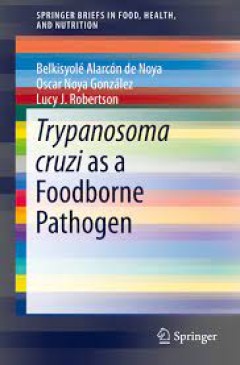
Trypanosoma cruzi as a Foodborne Pathogen
This Brief provides a comprehensive overview of Trypanosoma cruzi, a parasite that is traditionally considered as exclusively vectorborne, but can be foodborne, and may lead to outbreaks of Chagas disease in consumers. The characteristics of Trypanosoma cruzi and the clinical effects of the disease are covered, including documented outbreaks, regional patterns, and epidemiology. The various tra…
- Edition
- -
- ISBN/ISSN
- 978-3-319-23410-6
- Collation
- -
- Series Title
- -
- Call Number
- -
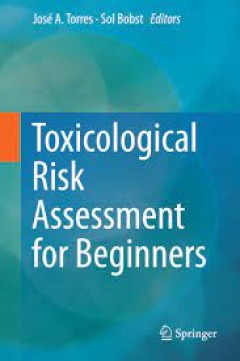
Toxicological Risk Assessment for Beginners
This book serves as a comprehensive introductory guide to the practical aspects of risk assessment. Chapters include clearly defined objectives and summaries. The book includes: hazard identification, dose-response, exposure assessment, risk characterization, chemical mixtures, epidemiology, emerging issues and global perspectives with accessible language. The book concludes with a set of hypot…
- Edition
- -
- ISBN/ISSN
- 978-3-319-12751-4
- Collation
- -
- Series Title
- -
- Call Number
- -
 Computer Science, Information & General Works
Computer Science, Information & General Works  Philosophy & Psychology
Philosophy & Psychology  Religion
Religion  Social Sciences
Social Sciences  Language
Language  Pure Science
Pure Science  Applied Sciences
Applied Sciences  Art & Recreation
Art & Recreation  Literature
Literature  History & Geography
History & Geography